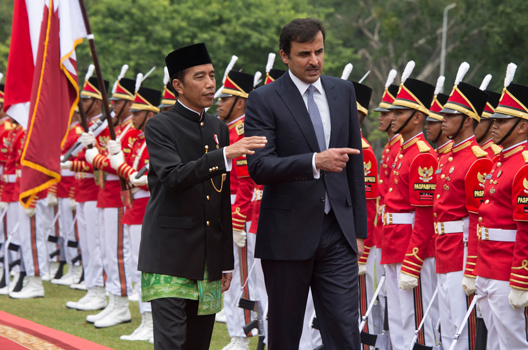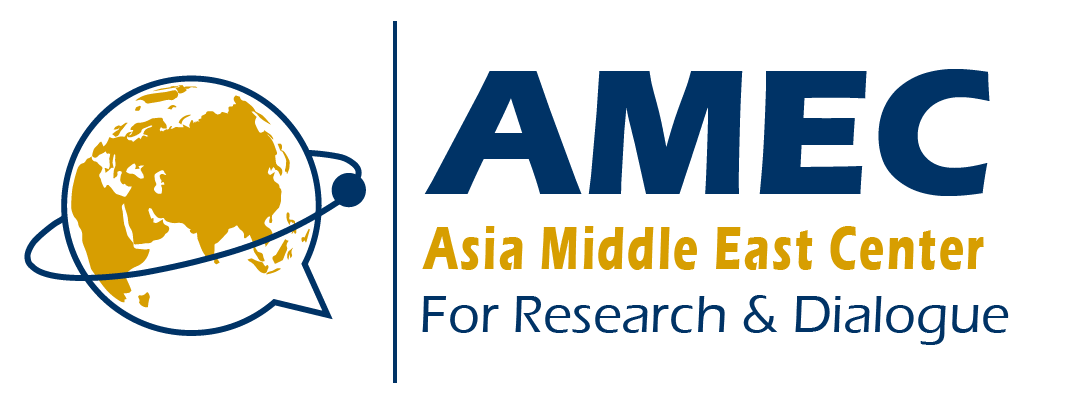Powering Partnerships: Qatar’s Trade Dynamics with ASEAN

By: Nabila Osman
This article examines Qatar’s trade with ASEAN countries through the lens of 2022 trade data, highlighting a strong economic relationship shaped by energy exports and trade imbalances. This asymmetry underscores potential areas for diversification and deeper bilateral relationships, while also exploring the key dynamics, regional trends, and implications for both Qatar and ASEAN.

1- Qatar’s Trade Surplus and Export Dominance:
Qatar enjoys a substantial trade surplus with all ASEAN countries, primarily driven by exports of liquefied natural gas (LNG), crude oil, and petrochemicals. In recent years, Qatar’s trade relations with ASEAN members have grown significantly, with the bloc collectively accounting for around 50% of Qatar’s trade market in 2017. The export of Qatari gas to the region has also contributed to Qatar’s economic resilience during the 2017 blockade by ensuring stable revenue streams and maintaining vital trade connections.
These energy exports cater to the industrial needs of economies like Thailand ($3.92 billion), Singapore ($3.83 billion), and Indonesia ($856 million). Smaller nations such as Laos ($633 million), Brunei ($546 million), and Myanmar ($670.35 million) also demonstratesignificant reliance on Qatari energy, though reciprocal trade remains minimal. This reliance underscores both the dependence of these countries on Qatari resources and the untapped potential for diversifying trade relationships.
Although ASEAN countries possess strong manufacturing and agro-industrial capabilities, their market penetration in Qatar remains limited. This may be due to mismatched demand or restricted trade agreements that hinder further market expansion for both regions. Malaysia has suggested establishing a free trade agreement (FTA) between ASEAN and the Gulf Cooperation Council (GCC) at the first ASEAN-GCC Summit held in October 2023, but this proposal remains in the preliminary stages. Similarly, though the first round of FTA negotiations between the GCC and Indonesia commenced in September 2024, its realization could potentially take a few years. Notably, Singapore is excluded from this challenge, as it already has an FTA with the GCC, including Qatar, since 2013.
2- Regional Economic Relationships:
Singapore stands out as a pivotal trade hub in Qatar-ASEAN relations. Facilitating $3.83 billion in Qatari exports and $658 million in imports to Qatar, Singapore leverages its strategic location, robust financial infrastructure, and neutral foreign policy to act as a bridge between the Gulf and Southeast Asia. This role reflects Qatar’s broader strategy of diversifying its economic and political ties beyond the GCC.
Other ASEAN nations also contribute significantly to Qatar’s imports. For instance, Thailand ($379 million), Malaysia ($354 million), and Indonesia ($315 million) supply a mix of high value goods that reflect their manufacturing and agro-industrial strengths. Thailand exports machinery and transport equipment to Qatar, while Indonesia supplies mineral fuels and oils.
Emerging economies like Vietnam ($175 million in exports to Qatar) and the Philippines ($83.4 million in exports to Qatar) present opportunities for growth as they continue to industrialize and diversify. These nations are poised to enhance their economic engagements with Qatar as they expand their manufacturing and export capacities.
Meanwhile, less developed nations such as Cambodia, Laos, and Myanmar maintain minimal trade flows with Qatar. These limited engagements highlight untapped potential for deeper economic integration between Qatar and ASEAN’s smaller economies.
3- Implications for Qatar and ASEAN:
The trade dynamics between Qatar and ASEAN highlight both opportunities and challenges for the two regions, underscoring the need for strategic adjustments to enhance mutual benefits. For Qatar, its reliance on hydrocarbon exports poses significant risks as the global energy transition gains momentum. While ASEAN has emerged as a key market for Qatar, the country’s limited diversification beyond energy products leaves its economy vulnerable to future shifts in global energy demand. Expanding its export portfolio to include value-added products could reduce this risk and create a more sustainable trade framework. Additionally, ASEAN’s advanced manufacturing capabilities offer Qatar an opportunity to diversify its imports. Enhancing these import ties could bolster Qatar’s supply chain resilience and reduce dependency on traditional trading partners.
ASEAN’s energy security is a multifaceted issue, with member countries sourcing LNG from various global suppliers. While nations like Thailand have diversified their LNG imports, including recent agreements with Oman LNG, others such as Vietnam are expanding their LNG infrastructure to reduce coal dependence. Smaller economies like Laos have minimal or no LNG import activity, reflecting their limited demand or alternative energy strategies, while Brunei is a notable LNG exporter with no need for imports. To enhance energy security, ASEAN countries are focusing on diversifying energy sources and suppliers, thereby mitigating risks associated with over-reliance on a single source and reducing exposure to potential supply disruptions.
ASEAN countries also have untapped potential to expand their export footprint in Qatar, targeting sectors like halal food, which caters to the dietary preferences of Qatar’s Muslim-majority population; textiles, leveraging ASEAN’s established manufacturing base, especially in countries like Vietnam, Indonesia, Cambodia, and Myanmar, which are known for their competitive garment and textile industries; and electronics, reflecting the region’s growing expertise in high-tech industries. While trade between Qatar and ASEAN demonstrates strong growth potential, the significant imbalance in export-import dynamics reveals a need for proactive strategies on both sides. Qatar has already made notable investments in ASEAN’s infrastructure, renewable energy, and technology sectors, reflecting its commitment to fostering strong economic ties. Building on these existing efforts and further diversifying into emerging industries within ASEAN could ensure reciprocal benefits and solidify long-term partnerships. For ASEAN, fostering stronger trade agreements and targeting high-value export opportunities in Qatar would enhance regional integration and economic security.
4- Additional Observation:
An interesting dynamic is that Qatar’s top two trade partners in ASEAN, Thailand and Singapore, are non-Muslim majority countries. This indicates that Qatar’s trade in the region is driven by economic pragmatism rather than cultural or religious alignment. Singapore’s strategic role as a financial and logistics hub and Thailand’s industrial capacity underscore their significance as trade partners. This fact reflects Qatar’s ability to prioritize mutual economic benefits over cultural considerations, enhancing its reach and influence in diverse markets.
5- Conclusion:
Qatar’s trade dynamics with ASEAN go beyond economics, reflecting a strategic blend of energy diplomacy and Qatar’s use of energy exports to expand its geopolitical reach. Singapore’s role as a major trade hub underscores its significance as a key economic partner for Qatar. Smaller trade partnerships with countries like Laos, Myanmar, and Cambodia reflect Qatar’s efforts to diversify its diplomatic relationships and reduce over-reliance on Gulf neighbors. Moving forward, strengthening trade agreements and diversifying exports and imports could solidify Qatar’s economic influence while creating sustainable benefits for both regions.
By: Nabila Osman
*Disclaimer: The views and opinions expressed in this article are those of the author and do not necessarily reflect the official policy or position of any organization, institution, or group with which the author is affiliated.
Sources:
Atlantic Council. (2017, July 7). ASEAN and the Qatar crisis. Atlantic Council.
https://www.atlanticcouncil.org/blogs/new-atlanticist/asean-and-the-qatar-crisis/
Gulf Cooperation Council. (2024, September 13). The first round of free trade agreement
negotiations between the GCC and the Republic of Indonesia. Gulf Cooperation Council.
https://gaft.gov.sa/en/media-center/news/Pages/The-First-Round-of-Free-Trade-Agreeme
nt-Negotiations-Between-the-GCC-and-the-Republic-of-Indonesia.aspx
Gulf Times. (2018, November 15). Asia a key trading partner for Qatar: FM. Gulf Times.
https://www.gulf-times.com/story/568009/Asia-a-key-trading-partner-for-Qatar-FM
Reuters. (2024, August 23). Vietnam’s second LNG terminal seeks cargo to begin commissioning
tests. Retrieved from
https://www.reuters.com/world/asia-pacific/vietnams-second-lng-terminal-seeks-cargo-be
gin-commissioning-tests-2024-08-23/
Reuters. (2023, October 20). Malaysia PM proposes free trade pact between ASEAN, Gulf
Council. Reuters.
https://www.reuters.com/world/asia-pacific/malaysia-pm-proposes-free-trade-pact-betwe
en-asean-gulf-council-2023-10-20/
Reuters. (2024, September 16). Thailand’s PTT signs 5-year LNG deal with Oman LNG.
Retrieved from
https://www.reuters.com/markets/deals/thailands-ptt-signs-5-year-lng-deal-with-oman-ln
g-2024-09-16/
The Observatory of Economic Complexity. (n.d.). Bilateral trade profiles with Qatar. Retrieved
January 8, 2025, from

